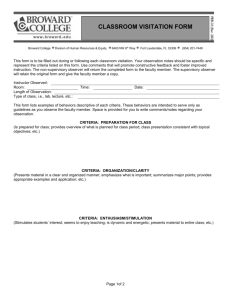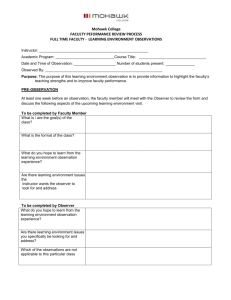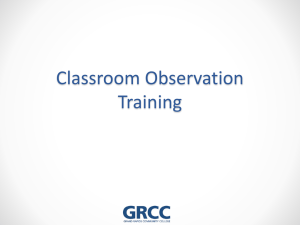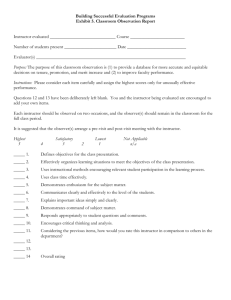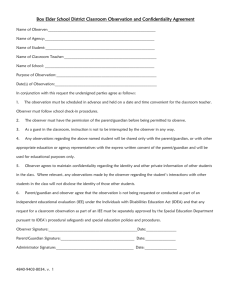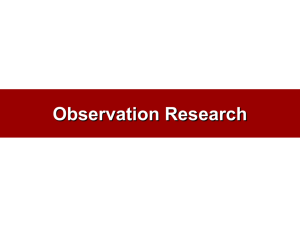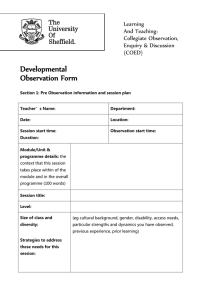Steps for Peer Observations
advertisement
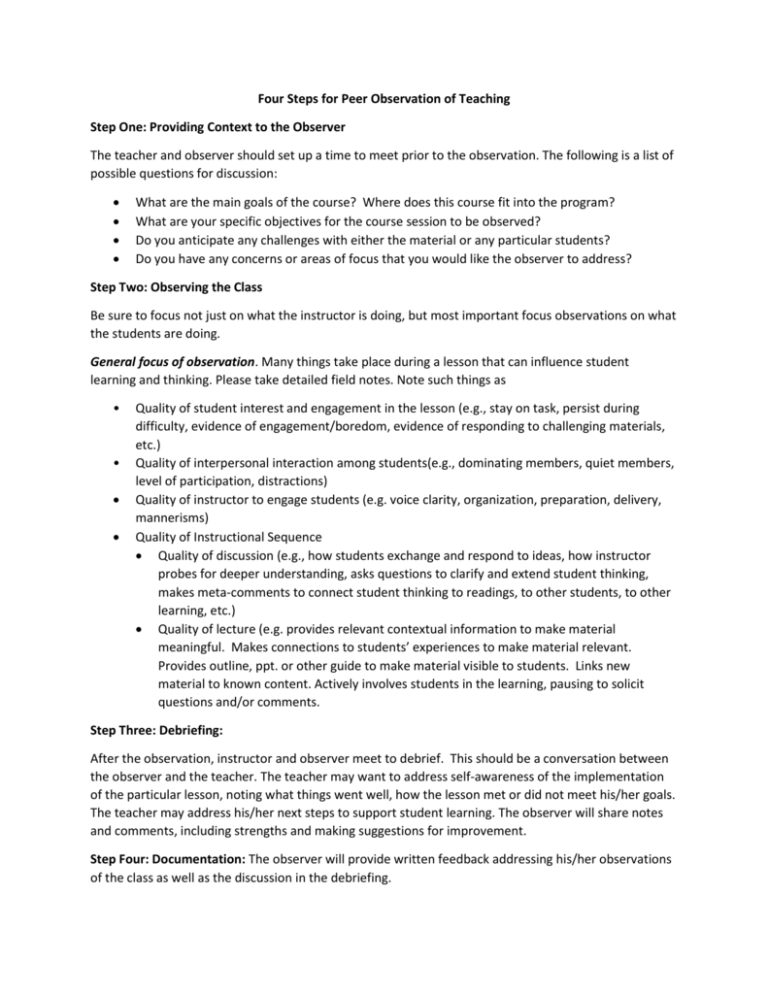
Four Steps for Peer Observation of Teaching Step One: Providing Context to the Observer The teacher and observer should set up a time to meet prior to the observation. The following is a list of possible questions for discussion: What are the main goals of the course? Where does this course fit into the program? What are your specific objectives for the course session to be observed? Do you anticipate any challenges with either the material or any particular students? Do you have any concerns or areas of focus that you would like the observer to address? Step Two: Observing the Class Be sure to focus not just on what the instructor is doing, but most important focus observations on what the students are doing. General focus of observation. Many things take place during a lesson that can influence student learning and thinking. Please take detailed field notes. Note such things as • • Quality of student interest and engagement in the lesson (e.g., stay on task, persist during difficulty, evidence of engagement/boredom, evidence of responding to challenging materials, etc.) Quality of interpersonal interaction among students(e.g., dominating members, quiet members, level of participation, distractions) Quality of instructor to engage students (e.g. voice clarity, organization, preparation, delivery, mannerisms) Quality of Instructional Sequence Quality of discussion (e.g., how students exchange and respond to ideas, how instructor probes for deeper understanding, asks questions to clarify and extend student thinking, makes meta-comments to connect student thinking to readings, to other students, to other learning, etc.) Quality of lecture (e.g. provides relevant contextual information to make material meaningful. Makes connections to students’ experiences to make material relevant. Provides outline, ppt. or other guide to make material visible to students. Links new material to known content. Actively involves students in the learning, pausing to solicit questions and/or comments. Step Three: Debriefing: After the observation, instructor and observer meet to debrief. This should be a conversation between the observer and the teacher. The teacher may want to address self-awareness of the implementation of the particular lesson, noting what things went well, how the lesson met or did not meet his/her goals. The teacher may address his/her next steps to support student learning. The observer will share notes and comments, including strengths and making suggestions for improvement. Step Four: Documentation: The observer will provide written feedback addressing his/her observations of the class as well as the discussion in the debriefing.


